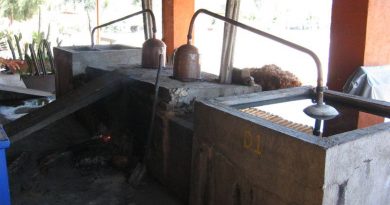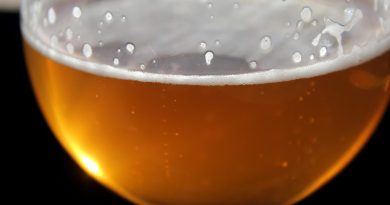A Global Guide To Coffee Tasting
Coffee primarily grows within a belt thirty degrees north and south of the equator, between the Tropic of Cancer and Tropic of Capricorn. Within this belt, more than eighty countries grow great coffee throughout Asia, Africa and the Americas. Within each region, different countries and even different areas within countries have even more specific qualities. Like fine wines, if you really want to explore and imbibe, the world of coffee offers unlimited opportunities for your palate.
Africa
African coffees are known for their high acidity and floral tones. The acidity is not a result of the type of plant grown, rather it is because farmers in Africa tend to soak their beans in water for up to five days, much longer than elsewhere in the world, a much longer period of fermentation for the beans and acidity to more fully develop. Some of the great African coffees include Ethiopian – There are several amazing growing regions in Ethiopia, the birthplace of coffee. In the northeast of the country is Harar, an exceptionally arid region in a very arid country. The coffee grows in the hills surrounding the ancient walled city of Harar, where medieval trade routes from the south and north once met. Many farmers in Harar dry their coffee inside the cherry, rather than stripping the cherry fruit off first (largely for lack of water to enable the process). This is called the sun-dried method. This method of processing results in a fruitier cup. Hara is known as one of the milder, softer Ethiopian varieties.
In the south are the regions of Yirgacheffe and Sidamowhere coffee was originally found by the goatherd Kaldi, who watched his goats prance crazily after eating red cherries off a bush. Yirgacheffe is one of the most prized coffees in the world, noted for its citrus and lemony tones, as well as a floral aroma. The Yirgacheffe and Sidamo regions intertwine around various mountain passes, and the coffees are often indistinguishable.
Sidamos tend to be a little milder or smoother than Yirgacheffes. Less popular coffees from Ethiopia include Limu, Jimma, Bebeka and Lekempte.
Kenya
Coffee from Kenya has an amazing, high acidity combined with a bright, winey taste. Unlike other origins, there is hardly any shade used in Kenya, meaning there are no certified organic coffees available from this area. Kenyan coffee comes in at a high price in their national auction system, a holdover from the British colonial days, but little of that money reaches the farmers. Look for Kenya AA or Peaberry (only one bean per cherry instead of the typical two)
for quality Kenyan coffee.
Other African Coffees To Look For
Rwandan coffee has really come up in the last ten years as the government and foreign aid groups have poured money into new processing stations, thereby increasing the quality and consistency of this coffee. Rwandan coffee tends to be full-bodied and acidic. The newest entry in African speciality coffee is Burundi, which has also received large aid for upgrading processing. Similarly, coffee from Congo is beginning to appear as aid groups work to create a decent economy in that ravaged land. Ugandan and Tanzanian coffees share similar characteristics with Kenyan at a lesser price but tends to be a milder cup.
Ethiopian Coffee Ceremony
Asia
There are a wide variety of great Asian coffees coming from a kaleidoscope of cultures. The overall character of Asian coffees is their full body and resilience. They are wonderful in lighter roasts and due to their denseness, also hold their character well into the dark roast stage. Differences in processing mean that many Asian coffees carry a distinct earthiness that differentiates them from other regions.
Indonesia
Coffee was introduced to Indonesia (the East Indies) by the Dutch in the mid-1600’s to break the monopoly of the Turkish and Arabic traders over the beans that were, at the time, only grown in Ethiopia and Yemen. The Indonesian archipelago is made up of well over a thousand islands, big and small. Many of these grow spectacular coffee, some of which are the most in-demand in the trade, particularly for organic coffees. Lush forest cover and rich volcanic soils of the region make for extremely full-bodied coffees.
The highest rated coffees in Indonesia come from northern Sumatra where the Gayo Mountain, Lintong, and Mandheling coffees take top prizes as among the best in the world. Super full-bodied, amazingly low in acidity, slightly sweet and syrupy, with a touch (or sometimes rather more!) of that earthiness that so distinguishes these coffees.
Sulawesi
Produces another great Indonesian coffee from the Toraja region in the north part of that island. These coffees are smooth and clean, often with hints of nuts or spices underneath, perhaps because Sulawesi is on the outer fringe of the fables Spice Islands, the birthplace of nutmeg, mace and cloves. The island of Java produces coffees that are solid, with good body and a milder flavour than the Sumatrans, but still worth a try. Bali and Flores are more recent entries into the speciality coffee markets, sweet, full-bodied and slightly herbal or floral.
Papua-New Guinea (PNG)
A wild, untamed land that is relatively new to the coffee world. PNG coffee growing only began in the 1920’s when stocks of Jamaican coffees were transplanted there. But it takes many hands to make a great cup and most PNG coffees suffer from erratic processing or poor roads and infrastructure. At the same time, well-tended and processed PNG from the Central Highlands can match a good Sumatran in body and earthiness.
East Timor
A small independent island at the eastern edge of the Indonesian archipelago, East Timor coffee generally gets blended into two large growing regions of Maubesse and Ermera. That means the crop quality fluctuates year to year as buyers can’t know what’s in each bag. When the coffee is identified and segregated by growing village, like Timor Atsabe, the cup can be full-bodied, slightly nutty and very aromatic. This is a hard one to find but worth the effort for a real Javatrekker!
The Americas
Central and South America offer many wonderful coffees with surprisingly different characteristics. Factors accounting for the differences include altitudes, soils (whether volcanic or fertile Amazonian), processing techniques and varying coffee plant varietals used. Most Latin American coffees, however, have lost the earthier tastes as a result of the harmonisation of processing and drying techniques across the lands that have occurred in the last decade. The coffees range from smoky (Guatemala), sweet and mild (Peru), classic body and smoothness (Colombia) to slightly edgier and tart (Costa Rica).
Nicaragua
Nicaragua has become a leading coffee producer in the Americas due to the great volcanic soils and the increased professionalism of the farmers. Nicaraguan coffees are bold yet smooth, relatively low acidity, consistent and well processed. Look for coffees from Esteli, Jinotega, Matagalpa and Nueva Segovia.
Guatemala
A mountainous country speckled with a dozen different indigenous peoples trying hard to hold onto their cultures in an increasingly globalizing era, Guatemala produces amazing coffees. There are actually eight identified microclimatic regions around Guatemala and each produces a slightly different flavour profile. Notable regions include Huehuetenango (acidic and winey), Chimaltenango (sweet, acidic, citrusy), Lake Atitlan (full-bodied and citrusy) and Antigua (rich aroma, sweet taste). The dominant characteristics of Guatemalan coffees are their smoky, bold taste, pleasant acidity and hidden sweetness.
Colombia
Colombia has traditionally set the standard for Latin American coffees, particularly with the power of the state and Juan Valdez brand behind them. It is consistently sweet, medium bodied and notably smooth with medium acidity. The best Colombians are really good, but the average Colombian is, well, pretty average, and has been used forever as a grocery store and diner coffee. Try and seek out a named coffee from Colombia, from regions such as Narino, Magdelena, Medellin, Bucaramanga, Popayan and Huila. If it doesn’t have a regional identification, it is probably pretty mundane.
Peru
This is the forgotten child of the speciality coffee world. Peru is a huge country, so much so that the growing seasons differ by a month or so even within the same country. Peruvian coffees are noteworthy for their mildness and sweetness, despite being grown at exceptionally high altitudes on the Amazonian slopes of the Andes. As the flavour and mild acidity roast away, they are better in a light roast than dark. But a soft, sweet Peruvian is a subtle charm and can really be appreciated if you take your time with it. One of the most easily drinkable black coffees, with wonderful coffees coming from the Chanchamayo, Pangoa and Lamas.
Mexico
Another mild coffee from Central America. There are several coffee regions in Mexico and each has slightly different characteristics, but by and large you can count on Mexican coffee to be smooth and round in the mouth, medium acidity, not too bold, whether they come from Chiapas (nutty and sometimes slightly spicy), Vera Cruz (slight cocoa taste), or Oaxaca (almonds).
Of course, Brazil is the largest coffee producing country in the world, yet it does not top the charts for taste. Brazilian coffee makes some great espressos, and the flavours can range from bittersweet and cocoa dry to mild, nutty and low acid, but you won’t know which until you try it. Notable growing regions include Minas Gerais, Sao Paulo, Espirito Santo, and Parana. Other coffee growing countries in the Americas include El Salvador, Honduras and Panama.
More information:




